High-end audio doesn’t look the way it used to. Gone are the days when building a serious system meant racks of separates, a mess of cables, and a living room that looked more like a RadioShack clearance aisle than a space for actual living. The new face of hi-fi is compact, streamlined, and — whisper it — designed for people who also want to watch Netflix without apologizing for the sound. Enter Ruark’s R610 Music Console, a one-box network amplifier with enough power under the hood to drive most bookshelf or floorstanding speakers under $2,000.
It plays nice with TIDAL, Spotify Connect, and Qobuz Connect, supports movie watching without breaking a sweat, and integrates into modern homes with the kind of elegance that makes traditional stacks of gear look a bit like medieval torture devices.
Ruark isn’t just making hi-fi more compact; they’re making it harder to justify the “old way” unless you really enjoy the hobby of hoarding black boxes and explaining impedance curves to bored dinner guests.
Don’t be that person.
This category isn’t some niche experiment anymore — it’s the main event. Entry-level contenders from WiiM, NAD, Eversolo, and Bluesound are already soaking up a lot of the oxygen, but the real shift is happening higher up the food chain. Naim, Cambridge Audio, Marantz, NAD, Hegel, and yes, Ruark, are building network amplifiers and integrated amps with onboard streaming that can go toe-to-toe with traditional separates — and often win on convenience, footprint, and price.
Class A/B or Class D, doesn’t matter. The point is simple: network-ready integrateds aren’t just the future of high-end audio, they’re the present. And thank G-d for that, because the old way of stacking gear like Soviet-era filing cabinets needed to die a long time ago.
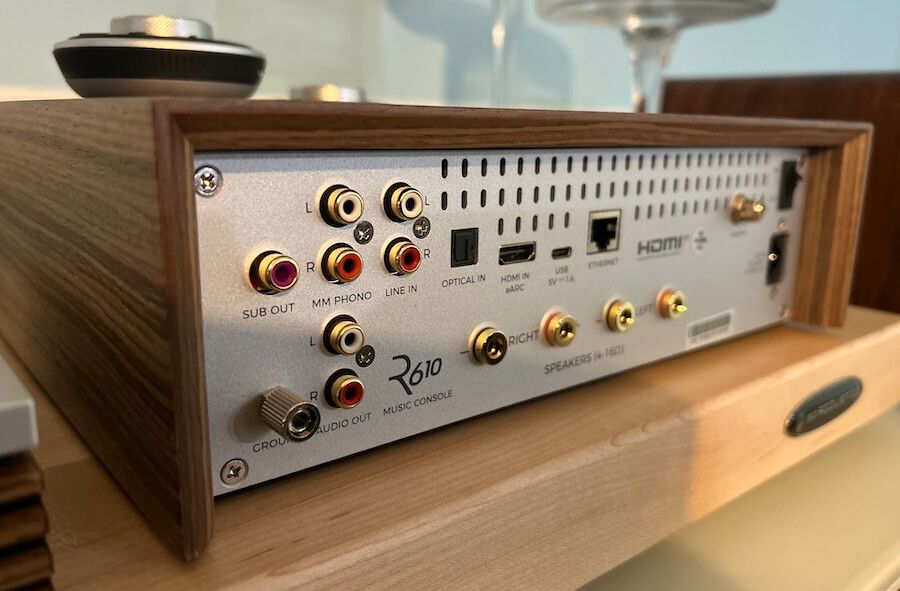
Ruark R610 Music Console: A Modern Network Amplifier for Streaming, Movies, and High-End Speakers
The R610 is the latest addition to Ruark’s 100 Series, slotting in alongside the R410 Integrated Music System and the R810 Hi-Fi Radiogram. But unlike its siblings — which neatly cram streaming, control, and speakers into one handsome cabinet — the R610 takes a different tack. It’s a standalone music console: the brains of the operation that also happens to include a rather powerful class D power amplifier.
Translation? You’ll need to bring your own speakers. That may sound like Ruark selling you half a system, but in reality it’s the clever bit. You get flexibility instead of limitation: run it with compatible wireless speakers for a multi-room setup, hook up powered or passive speakers, or drop it into an external amplifier or receiver chain. Ruark does the thinking, you provide the shouting — a partnership Blackadder himself might grudgingly approve of.
Under the hood, the R610 delivers 75 watts of Class D power per channel — more than enough muscle to drive most bookshelf or even modest floorstanding loudspeakers. Frequency response stretches from 22Hz to 22kHz (+0/-3dB), which means you’re getting proper low-end extension without the marketing fluff of “DC to daylight” promises. EQ control is onboard too: bass, treble, loudness, and Ruark’s own Stereo+ enhancement if you want to play with the soundstage.
A 32-bit/384kHz DAC handles digital duties, so yes — it’ll chew through hi-res files while you roll your eyes at anyone still defending their decision to buy into MQA. DSD support is not a thing here.
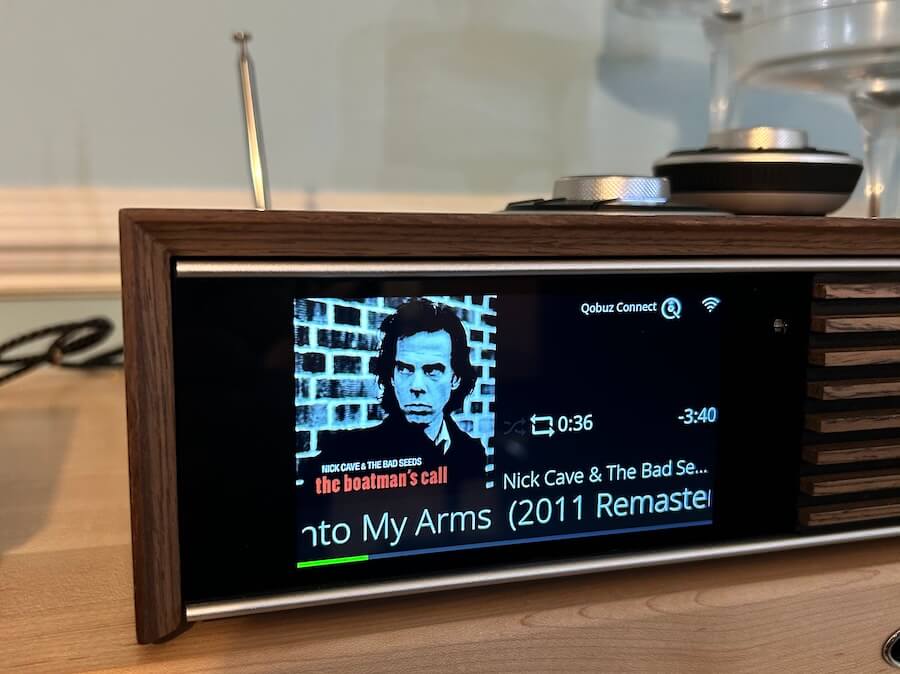
On the usability front, Ruark has gone all in. The 5-inch high-contrast TFT display doesn’t look like it was salvaged from a car stereo circa 2003 — it’s sharp, readable, and slick. Auto-standby saves power when you forget to press the off button (we all do). Adjustable input levels let you balance sources properly, and there’s a USB-C charge port for juicing a phone or tablet, though at 5W it’s more “keep alive” than “fast charge.”
Software updates arrive over-the-air or via USB, so this box won’t fossilize the minute Spotify changes its API. Control is handled through Ruark’s RotoDial interface, backed up by a rechargeable Bluetooth remote that feels like a proper piece of kit rather than an afterthought. You also get 20 global presets and app control via Spotify, BBC Sounds, and more. Yes, it speaks multiple languages too — handy if your household negotiations about playlists already sound like the UN Security Council.
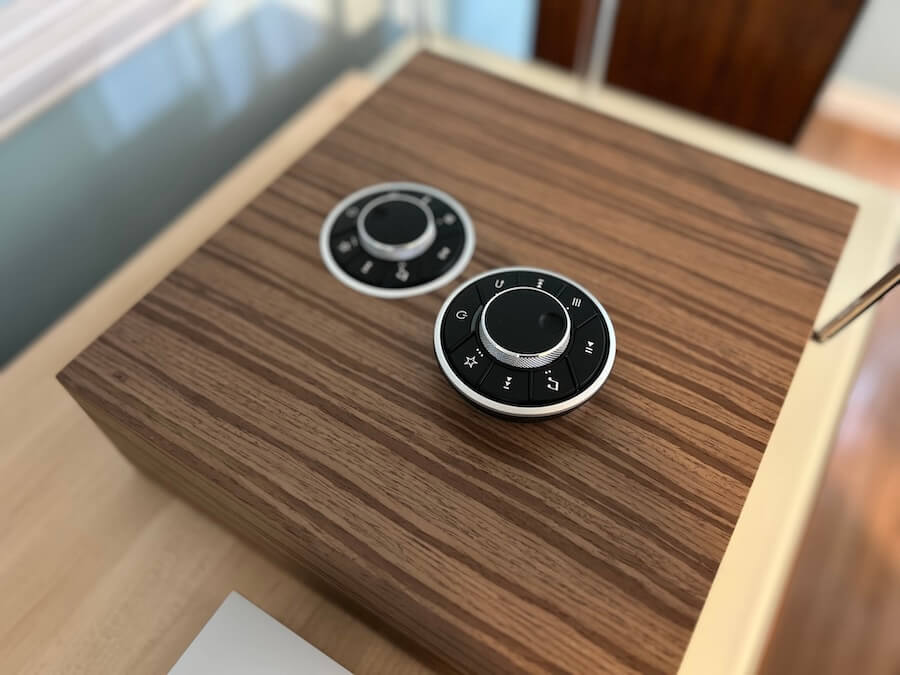
Connectivity is where the R610 really starts pulling rank. It covers Internet Radio, DAB/DAB+, and FM with RDS, so you’re sorted whether you’re in London, Berlin, or clinging to the last decent FM station in New Jersey. Multi-room playback works via Apple AirPlay and Google Cast, and Wi-Fi support runs all the way up to 802.11ax, so it won’t choke on your crowded network.
Streaming support includes AirPlay and Google Cast, plus direct integrations for Spotify Connect, TIDAL Connect, and Qobuz Connect. Amazon Music, Deezer, and BBC Sounds are also supported, just in case you want to hop between ecosystems like a caffeinated grasshopper.
Bluetooth 5.1 is onboard with aptX HD, AAC, SBC, Bluetooth LE, and A2DP, while the wired faithful get an RJ45 Ethernet port and full DLNA compatibility. And yes, CD playback is still on the menu — but only if you spring for the optional R-CD100 drive, which Ruark kindly supplied. It hooks up via the included USB-C to USB-C cable, making it feel less like an afterthought and more like a deliberate nod to those of us still clinging to shiny discs.

Inputs and outputs cover everything most people could possibly need: HDMI ARC/eARC, stereo RCA line-in, a moving-magnet phono stage for your turntable, optical input, USB-C playback, and a 75Ω F-type aerial connector. Line-out and pre-out options are available, plus a dedicated subwoofer output for when you want the neighbors to file a noise complaint.
File support is as broad as it gets: FLAC, AIFF, ALAC, and WAV up to 32-bit/384kHz, MP3 to 320kbps, and AAC in all its various flavors up to 96kHz. In short: if it’s digital, the R610 will play it.
Now for the design — and this is where Ruark’s industrial artistry earns real respect. The R610 comes finished in either satin charcoal lacquer or a fused walnut veneer that might just be one of the best-looking pieces of hi-fi I’ve laid eyes on at any price point in years. It’s the kind of finish that makes your other gear look like it was cobbled together out of plastic off-cuts.
Dimensions come in at 95 × 300 × 280mm (107mm high if you include the RotoDial), and it tips the scales at 4.1kg — reassuringly solid without being furniture-crushing. Power input accepts 90–240VAC, and consumption is rated at 2W in standby and 8W idle, so it won’t blow up your electric bill.
Ruark even nails the packaging. In the box you’ll find the R610 console itself, a 2m mains cable, quick start guide, the rechargeable RotoDial Bluetooth remote, two 3m runs of oxygen-free copper speaker cable (400 strand — because gods forbid you hook this thing up with bell wire), plus a telescopic aerial and spanner. Yes, they give you a spanner, because sometimes hi-fi still wants to remind you it’s a bit of a workshop hobby.
At the time of writing, Spotify Premium with Lossless still isn’t playing nicely through my son’s iPhone 16 — which feels about right, given how long Spotify have been dangling that carrot. Wireless Bluetooth headphones aren’t supported either, so if that’s your plan, you’ll need to look elsewhere — although we understand that Ruark is working on adding that feature possibly by the end of 2025.
Update from Ruark on the R610 — Following our review of the Ruark R610, the company has confirmed that the 100 Series does indeed support Spotify Lossless—we’ve verified this across all units tested this week. Additionally, Ruark will release a firmware update at the end of the month that enables connectivity to Bluetooth headphones. The hardware required is already built into all 100 Series models, and the update will activate this feature for units already in customers’ homes as well as new ones.
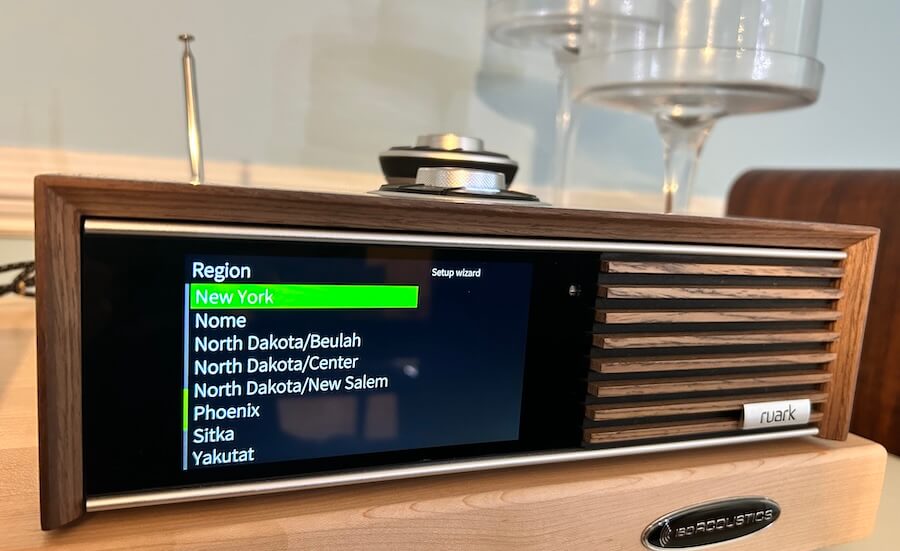
And for those thinking of streaming from a Bluetooth-enabled turntable, best forget it. Ruark aren’t fans of that particular party trick, and to be fair, they’re right — it’s a sonic compromise dressed up as convenience. Besides, the R610 comes with a surprisingly capable MM phono stage that’s designed to get the most out of your deck and cartridge, so why hobble it with Bluetooth compression?
As for setup, if you’re running the R610 as a proper stereo system with speakers sensibly placed 59-98 inches apart, Ruark’s Stereo+ processing is surplus to requirements. But if you’re shoving the console onto a sideboard or shelf with the speakers huddled closer, Stereo+ earns its keep. In that scenario, aim for 24-39 inches spacing if you can swing it — your ears will thank you, and you won’t have to explain to visitors why your expensive hi-fi sounds like it’s whispering from a broom closet.
Ruark R610 Music Console Specifications:
Amplifier & Audio
- Amplifier: Class-D, 2 x 75W per channel
- Frequency Response: 22Hz – 22kHz (+0/-3dB)
- DAC: Up to 32-bit / 384kHz resolution
- Audio Settings: Stereo+, bass, treble, loudness
Streaming & Connectivity
- Supported Services: Amazon Music, Qobuz, Deezer, BBC Sounds, and more
- Bluetooth: 5.1 (aptX HD, AAC, SBC, BLE, A2DP)
- Wi-Fi & Networking: Ethernet (RJ45, 10/100 Mbps), DLNA/UPnP support
- HDMI: ARC and eARC
- USB-C: Playback port + external CD drive support
- Multiroom: Apple AirPlay, Google Cast
Inputs & Outputs
- Line-In: Stereo RCA (up to 2.3Vrms)
- Line-Out: Selectable Line-out/Pre-out (stereo RCA)
- Subwoofer Output: Mono RCA (volume-related, full frequency)
- Optical Input: TOSLINK (up to 24-bit / 192kHz)
File Support
- FLAC, AIFF, ALAC, WAV: up to 32-bit / 384kHz
- MP3: up to 48kHz / 320kbps
- AAC formats: up to 96kHz / 320kbps
Design & Build
- Finishes: Fused Walnut veneer or Satin Charcoal lacquer
- Dimensions (HxWxD):
- 95 × 300 × 280mm (cabinet only)
- 107 × 300 × 280mm (with RotoDial controls)
- Weight: 4.1kg
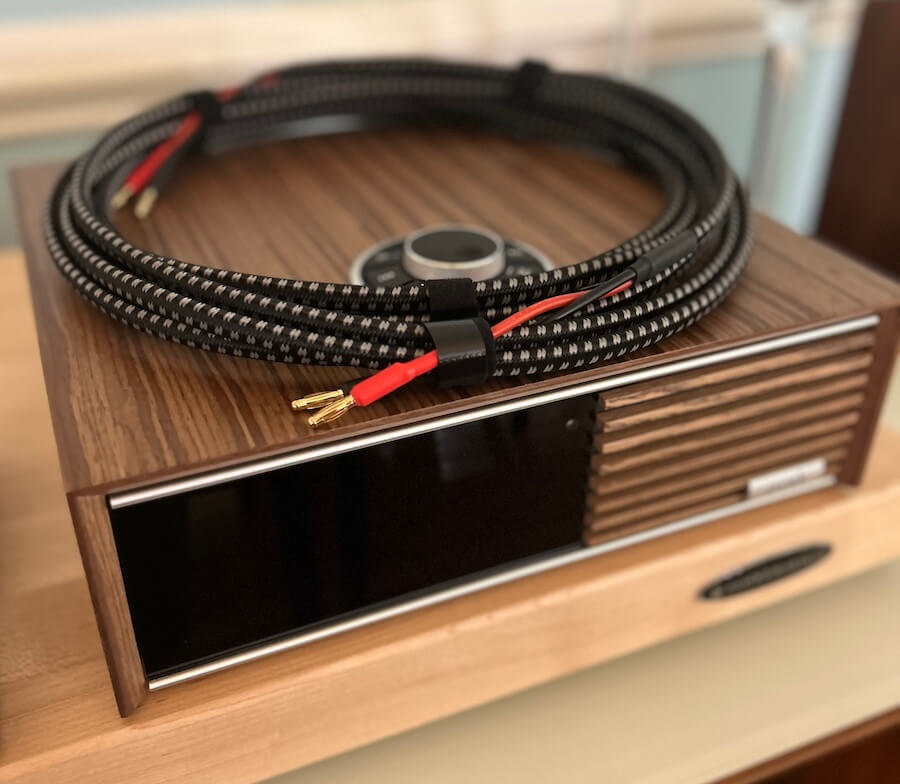
R610 Set-Up and System Matching:
Getting the R610 out of the box was surprisingly painless. The supplied speaker cables are decent — probably the “right” choice if you had the Ruark Sabre-R speakers, which, full disclosure, Ruark did not supply for this review. Out of the box, the R610 prompted a software update, which zipped through in no time thanks to my 2GB fiber optic Wi-Fi. The unit rebooted itself, landed on the setup menu, and seemed to smirk at me like it knew I’d soon be chained to its whim.
Much like the R1 tabletop radio I just reviewed, the R610 displays a digital clock when offline — a small but welcome touch. Selecting New York as my local radio network (a surprisingly wide list of cities is included) and entering my Wi-Fi credentials was straightforward. The connection worked instantly, and I didn’t lose the signal once over more than five weeks of listening.
The supplied RotoDial Bluetooth remote works flawlessly, though it’s the kind of small, rechargeable gadget that’s far too easy to misplace, sit on, or otherwise turn into a doctor’s visit waiting to happen.

Using my iPhone 14 to control Spotify Connect, TIDAL Connect, Qobuz Connect, and AirPlay was effortless, and the integrated RotoDial on the console itself handled source selection, volume adjustments during vinyl playback, FM radio, and CD use without complaint. It’s all very functional, very polished, and just slightly smug — in the way only Ruark gear can manage. Those hoping for a fancy control app will be disappointed. Not a thing with the R610; which I’m actually fine with as my smartphone has far too many “control” apps at the moment.
One thing to note: unlike units from NAD, Bluesound, and Marantz, the R610 doesn’t include advanced room correction software like Dirac, nor does it have custom room tuning built into units from WiiM or Eversolo. You won’t get that automatic “magic button” to fix less-than-ideal speaker placement.
Listening
The first thing the R610 really nails — and it nails it almost as well as the far pricier Naim Uniti Atom that set the bar for this entire category — is pacing, rhythm, and overall timing. This thing moves with genuine presence and energy; it doesn’t just play music, it propels it. Of course, this magic only happens if your loudspeakers are up to the task — which is exactly why Ruark created the Sabre-R speakers.
The R610 itself is punchy, slightly warm, and detailed, but pairing it with the right speakers is trickier than you might expect. Get it wrong, and all that timing and energy turns into politely nodding along at a lukewarm rendition of what could have been thrilling.
The Q Acoustics 3050i turned out to be a surprising dud. Some tracks delivered real impact in the sub and mid-bass, but it was all too fuzzy, polite, and restrained. The soundstage felt constrained between the speakers, with nothing ever really sticking the landing.

Nick Cave, in particular, lost some of his signature growl and edge — too diffuse, too soft around the edges. “Avalanche” and “Into My Arms” had body, sure, but focus? Not so much. The 3050i flirted with excitement but never quite committed.
Disappointed but not ready to throw in the towel, I swapped the Q Acoustics 3050i for the 5040 and the brand-new 3020C to see if things could turn around. And they did. Amy Winehouse might’ve broken my heart, but “Valerie” still makes the rounds in my test playlist, mostly because it exposes tweeters that lean too far into the “super airy” camp and end up sounding strident.
Both the 5040 and 3020C handled it with poise. Compared to the older 3000 series, bass is leaner, but the payoff is worth it — superior clarity, detail, imaging, speed, and a top end that keeps its bite without getting nasty. The R610 locked in beautifully with both speakers, though the 5040 feels like the more natural partner when you remember that the Ruark itself runs $1,899 USD.
Moving into the bass range, the R610 shows it’s got some authority — not the last word in iron-fisted control, but it delivers enough impact to keep things lively. Sub-bass and mid-bass hit with real weight and just a touch of bleed, but compared to the flabby 3050i performance, it’s a night-and-day upgrade.
Switching over to Aphex Twin, Sia, and Depeche Mode, the Ruark/Q Acoustics pairings proved they could handle the pacing, pulse, and atmosphere of new wave, electronic, and pop without tripping over themselves. This is an amp built for music you actually want to move to. Slow and plodding it is not.
Vocals were a mixed bag at first. The opening innings with the Q Acoustics 3050i left me underwhelmed — vocal-heavy tracks just didn’t connect, as if the R610 was holding something back.
Fortunately, the middle innings with the 5040 and 3020C flipped the script. Nick Cave, Sam Cooke, Sinatra, John Prine, Jason Isbell, David Byrne, Bowie — all came through with more inner detail, less weight dragging them down, and a presentation that felt open and unforced. Nothing sounded too buttoned-up or polite. The R610, when paired right, let these voices breathe and cut through with the presence they deserve.
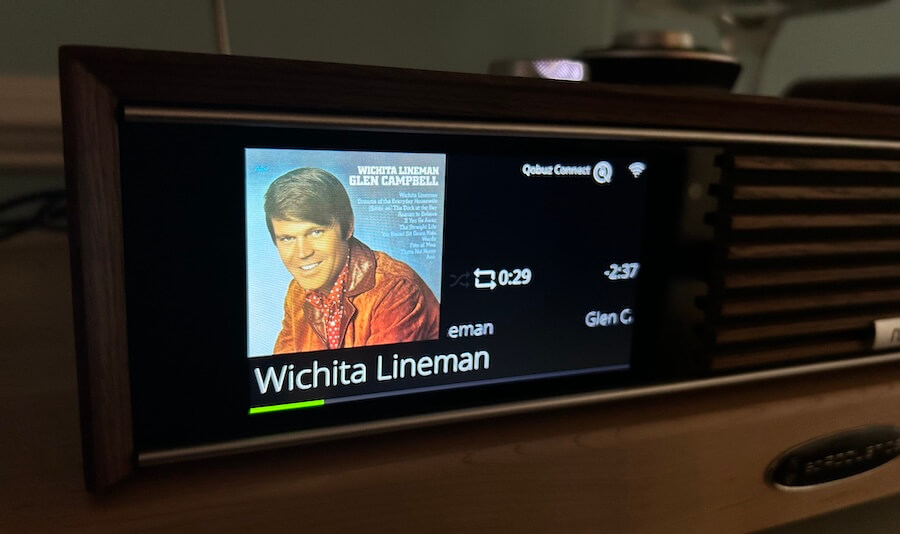
And that proved to be the case with the Acoustic Energy AE100 MKII and my 8-year-old Wharfedale Diamond 10.1s. I just wish the R610 wasn’t heading out this week for upcoming trade shows, because I’ve got new Wharfedales arriving in two weeks once I dig myself out of the backlog.
The R610 is a fantastic component—but making a blanket recommendation on which speakers outside of the Sabre-R would be the “perfect” match? That would take another month of testing. At this point, I feel like Tevye’s daughters singing “Matchmaker, Matchmaker, make a match!”—except the matchmaker isn’t returning my calls, and I’m left guessing.
CD and Vinyl Playback on the Ruark R610: Old Formats, New Energy
Users are free to hook up their own CD player or transport, but Ruark’s optional R-CD100 drive is the easy button — and honestly, a solid one. The drive and case look fantastic, easily matching the R610’s design, but the “slide in your CD and hope for the best” ritual feels a bit like feeding an ATM that might just swallow your card.
Thankfully, in practice it worked flawlessly. No SACD, no DSD, just straight-up Red Book, and it never flinched with dirty or scratched discs. Control is handled through the rechargeable RotoDial remote or the top-mounted RotoDial. Sonically, it often edged out Spotify and TIDAL/Qobuz streams, though it depended on the source.
A few hi-res streams made CDs sound like relics, while other discs reminded me exactly why the format still has defenders. Dropping in some of my 40 or 50 Blue Note and JVC XRCD jazz titles, for instance, had me tapping my fingers on the tabletop — always a good sign.
Vinyl playback turned out to be a pleasant surprise. Ruark didn’t just wedge a half-baked MM stage into the casework and call it a day. The built-in phono stage has real chops. My Pro-Ject Debut PRO with the Sumiko Amethyst, NAD C 588 with the Goldring E4, and a vintage Thorens TD-145 MKII with a Dynavector 10×5 all proved that a well-matched MM or high output MC cartridge can strut its stuff through the R610. Craft Recordings’ OJC reissues — Kenny Drew Trio, Wheelin’ and Dealin’ with Mal Waldron and Frank Wess, and Here’s Lee Morgan — came through clear, detailed, and full of tone.
Not the woolly, rolled-off sound some brands slip under “vinyl-friendly.” This was honest, engaging playback that actually made me want to keep pulling records.

The Bottom Line
The Ruark R610 doesn’t just play music — it makes you pay attention. At $1,899 USD, it delivers pacing, timing, and musicality that can stand toe-to-toe with competitors from WiiM, Eversolo, NAD, and Cambridge. The optional R-CD100 is a neat nod to the disc faithful, though anyone with a decent CD player already knows the drill. Setup is painless, the RotoDial controllers are handy, and streaming from Spotify, TIDAL, or Qobuz is straightforward — just don’t expect a shiny, dedicated app.
Its stiffest rival is the Cambridge Evo 150 — warm-ish, solidly built, universally compatible with speakers, and blessed with a full control app. Yet the R610 has presence, punch, and timing that gives it character, especially when paired with speakers that can actually keep up. In a field crowded with capable integrated streamers below $3,500, the R610 is one of my top three picks without hesitation. Punchy, detailed, slightly warm, and very alive — a compact powerhouse that reminds you why anyone still bothers with high-end audio at all.
Where to buy: $1,899 at Audio Advice | Ruark Audio
Related Reading:
- Cambridge Audio Evo 150 SE: A Class D Streaming Amp For Those With Deeper Pockets
- Ruark R1 Bluetooth Radio Review: For Those Who Think A Bose Is Something The Butler Uses
- Ruark Wants You To Keep Enjoying CDs With Their R-CD100 Transport: Preview
- WiiM Amp Ultra Review: The Powered Streamer With (Almost) Everything
- Naim Uniti Nova Power Edition Review: A Heavyweight Streaming Amp That Leaves WiiM And Eversolo In The Dust?




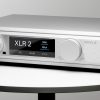


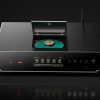





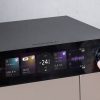
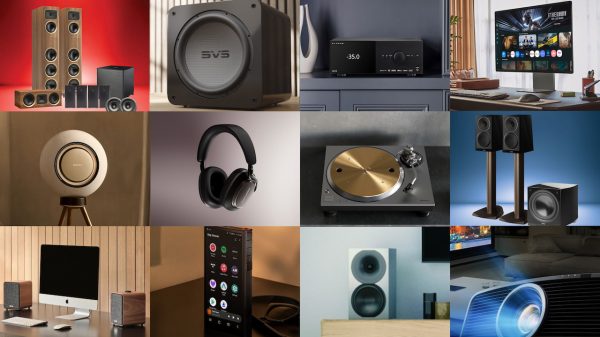


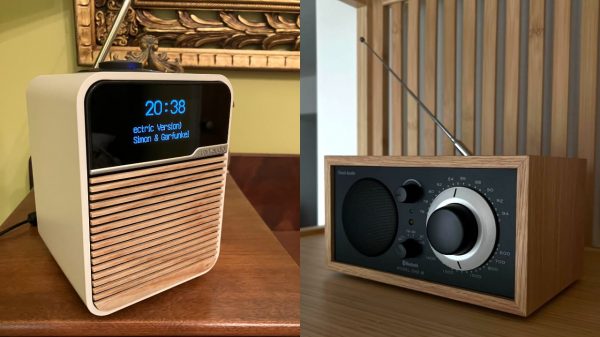
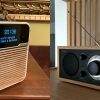

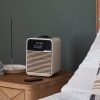
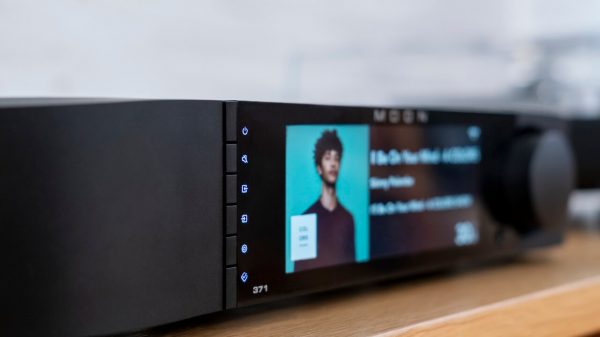

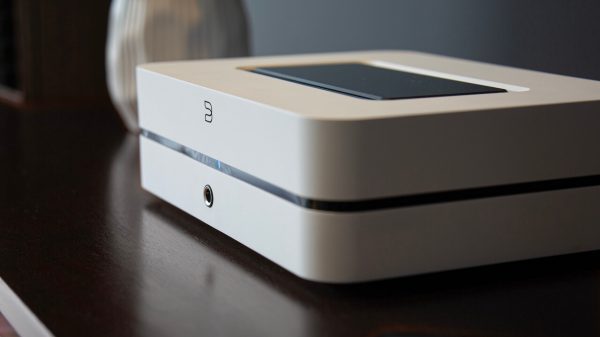


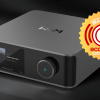













Anton
October 2, 2025 at 6:29 pm
One of your best. Really feel like this brand doesn’t get enough attention and this was on a shortlist.
Do you think it’s really that finicky with speakers or just the ones you had for the review?
No app? The lack of room correction software feels like a real miss, but I do love the design and the remote looks very different.
Wishing you and your family a heartfelt Happy Holidays and easy fast.
Ian White
October 3, 2025 at 4:22 pm
Appreciate the kind words. Put a lot of effort into the review.
I stand by my overall assessment in regard to loudspeaker synergy. An excellent amplifier that didn’t sound great with some good speakers. When I got the speaker correct — it was a dynamite combination.
I can see it being great with their speaker because they were developed together.
Acoustic Energy, DALI, Q 5040/3020c, Neat, and some of the newer Wharfedale (not Heritage) and Spendor could be a great match.
I’m considering the R610 as my long-term amp for the 5040. Will relisten in a few months when I can get the amplifier back after it does the show circuit
IW